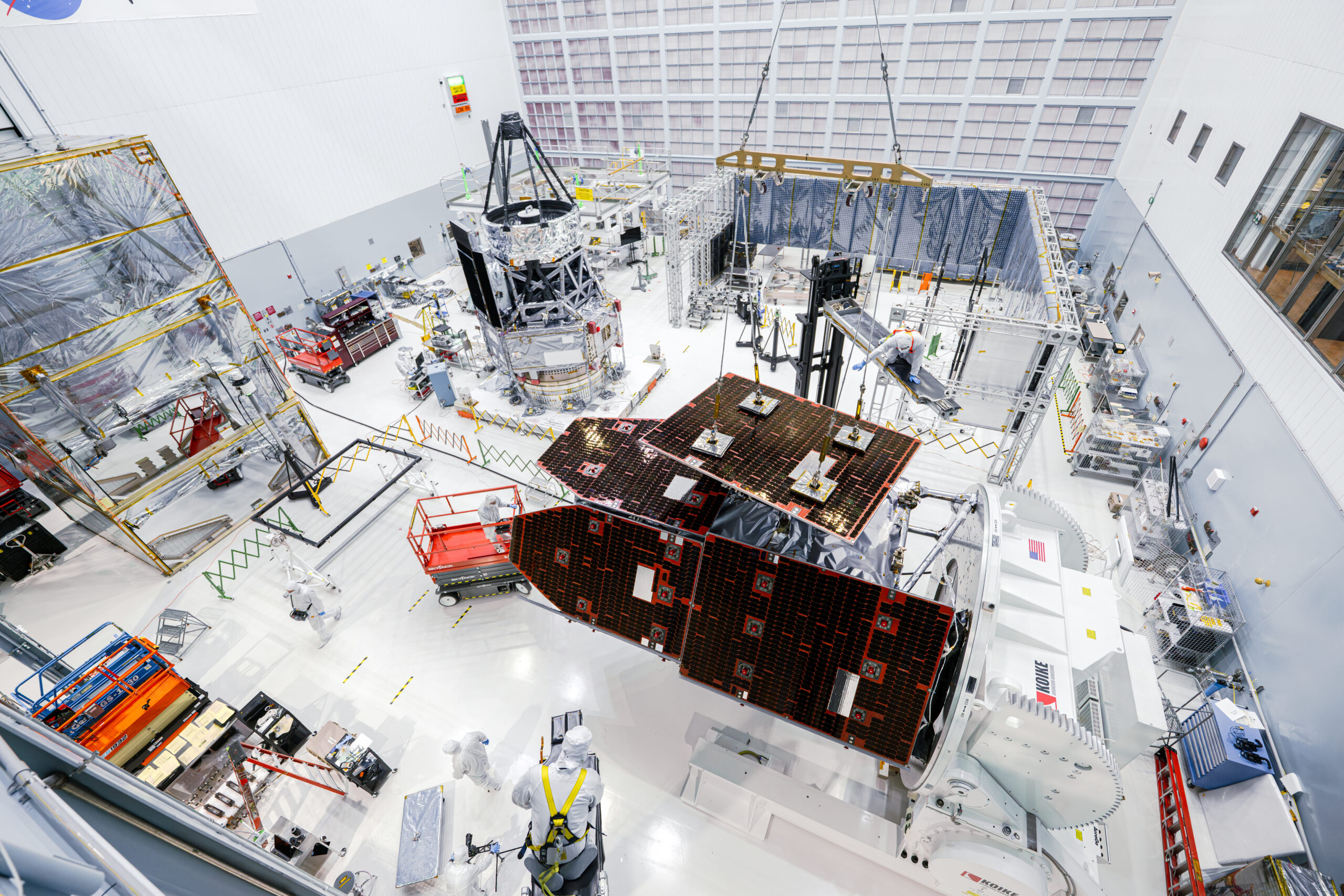Key Takeaways
- NASA technicians recently installed solar panels on the Nancy Grace Roman Space Telescope, nearing 90% completion.
- The observatory is set for a potential launch in fall 2026, ahead of the initial target of May 2027.
- The Solar Array Sun Shield is crucial for power supply and temperature control for infrared observations.
Progress on the Nancy Grace Roman Space Telescope
On June 14 and 16, technicians at NASA installed solar panels on the Nancy Grace Roman Space Telescope, marking a significant milestone in the telescope’s assembly. Collectively known as the Solar Array Sun Shield, these panels are designed to power the observatory and provide shade to protect vital instruments, facilitating essential observations.
Jack Marshall, the lead for the Solar Array Sun Shield at NASA’s Goddard Space Flight Center, stated that the observatory is approximately 90% complete. The next steps involve connecting two large assemblies before conducting a series of tests. The schedule indicates a potential launch as early as fall 2026, several months ahead of the anticipated date of May 2027.
The Solar Array Sun Shield consists of six solar panels. The two central panels are fixed to the observatory’s outer shell, while the remaining four will deploy once in space, adjusting to align with the central panels. This configuration ensures that the panels are continually oriented towards the Sun, providing a reliable power source while simultaneously shielding the telescope and maintaining a cool environment necessary for infrared observations. Excess heat from onboard components could interfere with data collection by saturating the detectors.
With the installation of the panels, Aaron Vigil, a mechanical engineer at Goddard, noted that the outer section of the Roman observatory is finalized. The upcoming tasks include testing the deployment of both the solar panels and the observatory’s deployable aperture cover. Additionally, technicians will evaluate the core components, conduct tests on the electronics, and perform thermal vacuum tests to ensure the system’s functionality in the challenging conditions of space.
The plan includes connecting the inner and outer segments of the telescope by November, resulting in a fully assembled observatory by the end of the year, ready for pre-launch evaluations.
The Nancy Grace Roman Space Telescope is managed by NASA’s Goddard Space Flight Center, with collaboration from various institutions, including the Jet Propulsion Laboratory, Caltech/IPAC, and the Space Telescope Science Institute. Key industrial partners are BAE Systems Inc., L3Harris Technologies, and Teledyne Scientific & Imaging.
The content above is a summary. For more details, see the source article.














